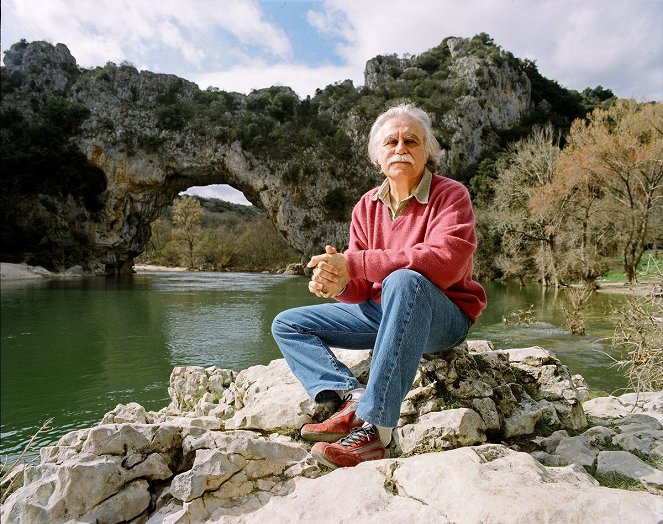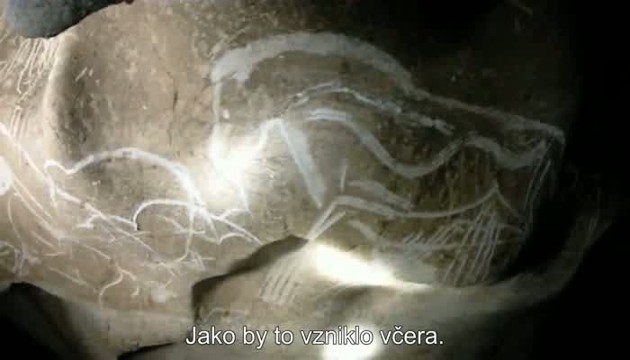Réalisation:
Werner HerzogScénario:
Werner HerzogPhotographie:
Peter ZeitlingerMusique:
Ernst ReijsegerActeurs·trices:
Werner Herzog, Jean Clottes, Julien Monney, Wulf Hein, Jean-Michel Geneste, Michel Philippe, Gilles Tosello, Carole Fritz, Dominique Baffier (plus)VOD (1)
Résumés(1)
La Grotte Chauvet-Pont d'Arc est protégée du monde depuis 20 000 ans... Sur ses parois, des dessins, des oeuvres, des témoignages exceptionnels créés à l'époque où les hommes de Néandertal parcouraient encore la Terre. Depuis, seules quelques très rares personnes ont été autorisées à pénétrer dans la grotte, et ses chefs-d'oeuvre sont restés à l'abri des regards – jusqu'à ce que Werner Herzog obtienne l'autorisation d'y réaliser un documentaire d'exception. Avec ses caméras 3D,Werner Herzog a capté toute la beauté de ces merveilles dans l'un des sites les plus grandioses qui soit. (Metropolitan FilmExport)
(plus)Vidéo (2)
Critiques (4)
A beautiful glimpse into a cave where an ordinary person wouldn't usually venture, at least not someone who isn't a scientist or doesn't work within the cave system. Werner Herzog brings an interesting documentary with personal commentary that sometimes disrupts the experience, while other times it deepens it. Even so, the film remains a unique experience you won't find anywhere else.
()
Well, I don’t know. Has Herzog made a documentary that delves philosophically on human history? Or is he simply taking the piss and, with a basilisk smile, is giving pseudo-intellectuals fodder to get bogged down in unreadable meaningless reflections full of foreign words? Is he making fun of all those scientists who have dedicated their lives to figuring out which bison prehistoric people painted before and which one later – because it doesn’t fucking matter? Albino crocodiles, a man trying to find a cave by smell, the American anthem played on a human bone whistle, a scientist telling in broken English he must "absorb" the experience of visiting a cave… I’m inclined to say that Cave of Forgotten Dreams is a cute and subversive joke by Herzog at the expense of those ethereal beings who ponder over everything that can be pondered over.
()
I think it's a much more significant film than it seems at first glance. It represents a return to a kind of primal dreaming, to the pure, uncontaminated removal of man from the spirit world, an archetypal fascination with the transformation of shape and substance. Herzog uses film and 3D contrary to the current illusory conception, which aims at the perfection of the effect (his 3D is actually very imperfect at times). He descends into the depths of history and human memory to re-present, like prehistoric artists, a miraculous essence, and lets the viewer feel the depth of the dream where he is no longer accustomed to seeing it – in the quiet, in the immovable, in the simple shape. His documentary is a layered reflection on many very basic topics, yet he does not have to commit postmodern relativization (the popular dimension of "prank" is missing today – what if someone painted it there yesterday?). The paintings in the Chauvet Cave are a memento of something that is constitutive for modern human beings, which they have been trying to approach since the beginning – charcoal, brush, musical instrument, camera... It is not Mallick who has taken care of the most-spirited and most-suggestive experience – Herzog shows that the power of the long-overdue structuring illusion of human perception lies in the simplest shape. I don't know about you, but I found dreams in this cave again instead of losing them (and even if it was discovered tomorrow that the Chauvet Cave is a hoax, it wouldn't really change anything about its magic)
()
In this distinctive documentary, Werner Herzog offers a glimpse into places that few people have ever seen with their own eyes. For this opportunity, he and his team deserve a big thank you – for their perseverance, determination and commitment to bring the beauty and uniqueness of the Chauvet cave system to the public. The film certainly could have benefited from a shorter running time, as the location felt overly tedious and some sequences were completely out of the storyline. But this was clearly Herzog's intention, trying to create a richer narrative than a mere documentary about the murals. The whole film exuded a strongly spiritual atmosphere, which was enhanced by a strong musical score with religious overtones. The cave system appeared as a kind of sacred temple in which time had stopped and which defies most of our understanding.
()
Photos (61)
Photo © IFC Films



Annonces